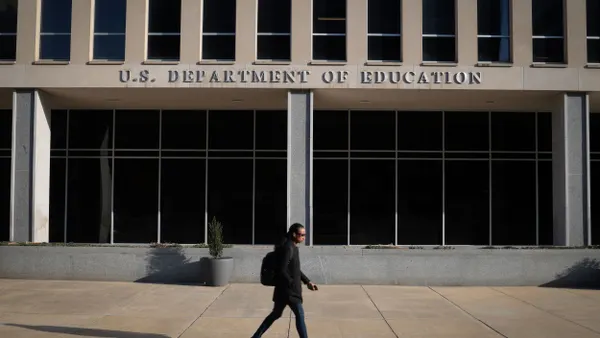Dive Brief:
- The number of schools and districts participating in the Community Eligibility Provision is up 21% for the 2022-23 school year, according to a recent report from the Food Research & Action Center. The Community Eligibility Provision, or CEP, is a federal reimbursement program that allows high-poverty schools to serve free breakfast and lunch to all students without requiring an application.
- The report found that 6,935 additional schools have adopted CEP this school year, bringing the total number of participating schools to 40,235, FRAC said.
- There’s a roughly 23% uptick in the number of children attending a school that participates in CEP, according to FRAC. Overall, the organization found 19.9 million children benefited from CEP during the 2022-23 school year, an increase of about 3.7 million children from a year ago.
Dive Insight:
Now that 82% of eligible schools have adopted CEP, FRAC’s findings also show participation in the program, which is administered by the U.S. Department of Agriculture, has reached an all-time high since it first became available nationwide in the 2014-15 school year.
Community Eligibility Provision participation among schools continues to grow
At the start of the COVID-19 pandemic in 2020, Congress passed a temporary waiver that allowed all students to receive free school meals nationwide regardless of their family’s income. However, Congress allowed that measure to expire in June 2022.
The recent growth in CEP adoption among schools follows the abrupt end to nationwide access to free school meals, which has also caused districts to once again face ballooning meal debts.
In order for students to continue receiving free school meals, eligible low-income families must apply for free or reduced-price meals unless the student’s school or district qualifies for CEP. To qualify for the provision, a school or district must currently meet a minimum threshold of 40% of total student enrollment eligible for free meals, also referred to as the “Identified Student Percentage.”
However, it’s possible that more schools could soon qualify for CEP, as the USDA is considering a proposed rule that would expand access by lowering the minimum percentage to 25%. The 45-day public comment period on the USDA proposal closed in May.
While school nutrition advocates have called for the return of a nationwide universal school meal policy, CEP has long been seen as a pathway toward that goal.
However, some states are taking matters into their own hands as federal efforts to ensure school meals for all students hit delays. As of this year, five states — California, Colorado, Maine, Minnesota and New Mexico — have passed legislation permanently guaranteeing free school meals to all students.
Efforts to pass state-level universal school meal legislation remain underway in 27 states including Montana, North Dakota and Virginia.
New York’s state budget, passed in May, included an additional $134 million investment to increase participation in CEP by removing barriers for some schools to adopt the federal provision. While universal school meal advocates in New York expressed support for such efforts, they said it still falls short of solidifying a statewide universal school meal policy.
“Ensuring all schools that qualify for the Community Eligibility Provision (CEP) program are able to participate is an important step that will reduce food insecurity, especially in places with the greatest need, but it is not a substitute for universal free school meals,” the Healthy School Meals for All NY Kids Coalition said in a May statement.












